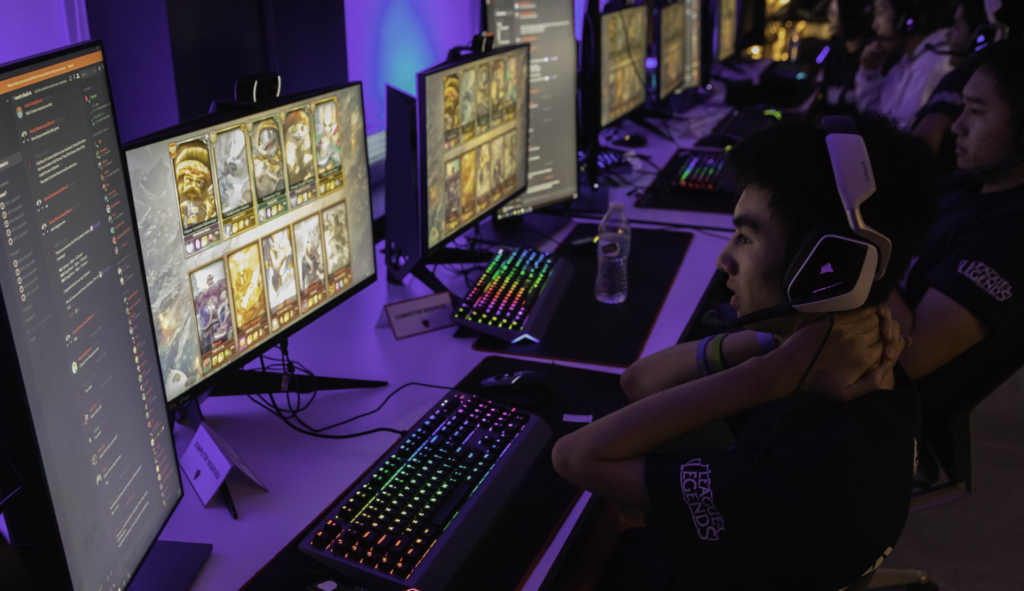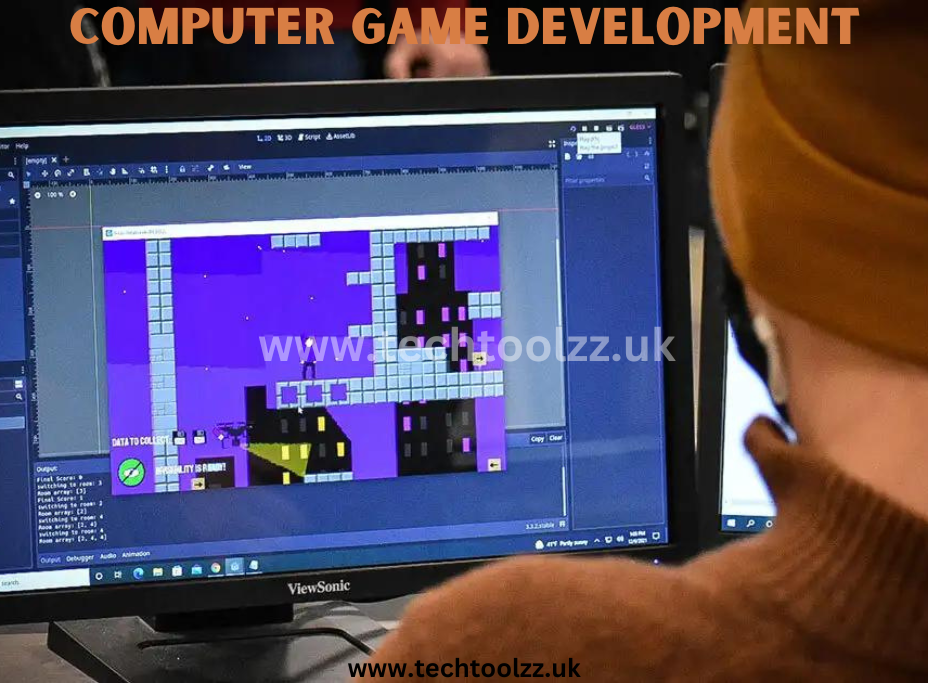Computer game development
Welcome to the outright exhilarating universe of PC game turn of events! It’s a domain where creative mind has no limits and inventiveness rules. From the unassuming starting points of pixelated experiences to marvelous augmented simulations, PC games have made some amazing progress.
In this article, we will take you on a thrilling excursion through the Computer game development advancement of gaming, dig into the many-sided course of game turn of events, investigate the abilities expected for progress in this industry, reveal famous programming dialects utilized by engineers, examine current difficulties and patterns in game turn of events, and even look into what’s on the horizon for this always developing field. So get your regulator or console; now is the right time to step up your insight on PC game turn of events!
The Development of PC Games Computer game development
PC games have progressed significantly since their initiation. From humble starting points as straightforward pixelated illustrations and essential ongoing interaction mechanics, they have developed into vivid, outwardly staggering encounters that enrapture players, everything being equal. The development of PC games can be ascribed to headways in innovation, imagination, and the always developing requests of gamers.
In the beginning of PC gaming, titles like Pong and Space Trespassers were earth shattering accomplishments. Computer game development These games established the groundwork for what was to come – more mind boggling storylines, practical designs, and connecting with interactivity. As equipment abilities improved, designers drove the limits further with each new delivery.
The presentation of 3D illustrations upset game plan. Unexpectedly, players could investigate virtual universes according to alternate points of view, adding an entirely different aspect to the gaming experience. Games like Super Mario 64 and Burial chamber Looter exhibited this recently discovered ability with their extensive surroundings and many-sided level plans.
With the ascent of online network came multiplayer gaming on a worldwide scale. Gamers could now go up against or help out different players from around the world continuously fights or agreeable missions. This social perspective added one more layer of profundity to ongoing interaction and made networks where gamers could associate.
As innovation kept on progressing at a remarkable rate, so too gamed advancement procedures. The presentation of movement controls achieved another time in intuitive gaming encounters. With gadgets, for example, Nintendo Wii’s movement detecting regulators or Microsoft Kinect’s signal acknowledgment framework, players turned out to be actually engaged with their number one games.
Computer game development reality (VR) has arisen as perhaps of the most thrilling advancement lately. With VR headsets like Oculus Fracture and HTC Vive turning out to be progressively open to purchasers, gamers can now drench themselves completely in virtual universes more than ever. This innovation offers unrivaled degrees of drenching by following head development and giving an unquestionably reasonable feeling of presence inside computerized conditions.

The Course of Game Turn of events
The course of game improvement is a perplexing and unpredictable excursion that requires cautious preparation, innovativeness, and specialized mastery. Everything starts with the conceptualization stage, Computer game development, where thoughts for the game are conceptualized and figured out. This is trailed by the pre-creation stage, where the general plan and construction of the game are made.
When the underlying foundation is laid, now is the right time to continue on toward creation. This includes making the resources for the game like characters, Computer game development, conditions, and articles. Software engineers then step in to rejuvenate these components by composing code that controls how they act inside the game world.
Testing assumes an essential part in guaranteeing that everything capabilities easily. Bugs and errors are distinguished and fixed during this stage, improving interactivity experience.
Understanding the Jobs and Abilities Required in Game Turn of events
Game improvement is a cooperative cycle that includes different jobs, each contributing their exceptional abilities to rejuvenate a game. From creators to developers, craftsmen to sound specialists, each colleague assumes a critical part in making a vivid gaming experience.
One of the vital jobs in game improvement is that of a game originator. These people are liable for creating the general idea and interactivity mechanics of a game. They have a profound comprehension of player brain research and make levels, riddles, and difficulties that keep players locked in.
Another significant job is that of the software engineer. These gifted people compose the code that rejuvenates the fashioner’s vision. They work with dialects like C++, Java, or Python to foster the center usefulness of the game.
Specialists likewise assume a fundamental part in game improvement by making outwardly staggering designs and live lines. They use programming like Photoshop or 3D displaying instruments to configuration characters, conditions, and enhancements.
Sound specialists add one more layer of inundation by making practical sound impacts for games. They utilize specific programming and gear to record sounds and create music that improves the general gaming experience.
Notwithstanding these particular jobs, collaboration and relational abilities are fundamental for fruitful game improvement projects. Cooperation between colleagues guarantees smooth coordination all through all progressive phases.
Besides, remaining refreshed with arising advances like computer generated experience (VR) or expanded reality (AR) is turning out to be progressively significant in this quickly developing industry.
Well known Programming Dialects Utilized in Game Turn of events
In the realm of PC game turn of events, programming dialects assume a pivotal part. These dialects act as the establishment for making drawing in and vivid gaming encounters. While there are various programming dialects out there, some have arisen as top choices among game designers because of their adaptability and execution abilities.
One such famous language is C++. Known for its elevated degree of control and productivity, C++ is broadly utilized in game turn of events. It permits software engineers to upgrade code for better execution and offers broad libraries explicitly intended for game creation.
One more language ordinarily utilized in game advancement is C#. This article situated language gives an easier sentence structure contrasted with C++, making it more open for fledglings. With its mix with Solidarity, one of the main game motors in the business, C# has turned into a go-to decision for the vast majority yearning engineers.
Java likewise tracks down its spot in the domain of game turn of events. Albeit not as performant as C++ or C#, Java’s cross-stage similarity creates it ideal for creating games that can be played on different gadgets and working frameworks.
Python, known for its effortlessness and clarity, has acquired fame among independent engineers. Its usability makes it reasonable for prototyping as well as for executing computer based intelligence calculations or procedural age strategies inside games.
While these are only a couple of models, each programming language carries exceptional benefits to various parts of game turn of events. The decision at last relies upon elements like undertaking prerequisites, group ability, and target stages.
The universe of innovation never stops; new programming dialects constantly arise while existing ones advance further to address developing issues in-game turn of events. Keeping awake to-date with patterns permits designers to use imaginative apparatuses like Rust or Quick that proposition further developed execution or explicit stage benefits individually.
Difficulties and Patterns in Game Turn of events
Fostering a PC game is without a doubt an interesting interaction, yet it’s not without its difficulties. Quite possibly of the greatest obstacle that game engineers face is staying aware of the steadily developing innovation scene. As new equipment and programming arise, designers should adjust their abilities and procedures to remain important.
Furthermore, the rising interest for top notch illustrations represents one more snag for engineers. Players expect staggering visuals that submerge them in virtual universes more than ever. This requires steady enhancement of illustrations motors and use of cutting edge delivering methods.
